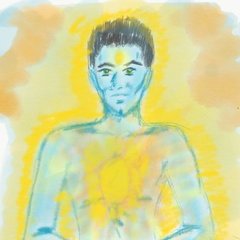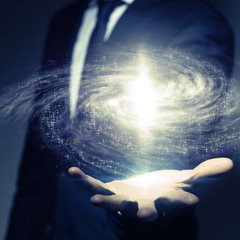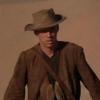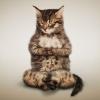Search the Community
Showing results for tags 'Taichi'.
Found 18 results
-
Hi Folks, Been out of sight for a while due to personal reasons. Over the summer, my brothers and I recorded many videos covering our practice regimen and some short(ish) talks about how we approach Taijiquan and Dao, Daogong, and so on in our system. Feel free to share your thoughts here or on the youtube channel. Subscribe if you like We hope to make these an ongoing podcast series - the idea is, life is short, time is limited and we want to get some information out there on what we consider to be a powerful system. As the saying goes -- "proof of the pudding is in the eating", so we've shared some drills, etc, we use for training and teaching.
-

Why is my body/mind able to do Tai Chi but not Qigong?
searcher7977 posted a topic in Daoist Discussion
Hi all, My question is, what is so different about taijiquan and qigong, such that I struggle to do even 3 minutes of Spring Forest Qigong or zhan zhuang (or even Flying Phoenix Chi Kung), but I can do 5-10min of the tai chi? Not only that, but tai chi is the only practice that has actually given me a sort of buzz. It seems to me the active opening and closing movements, along with feet movements, are helpful, but I lack knowledge of the inner workings to understand this. The form of taijiquan I'm doing is Bruce Frantzis wu style. As a follow up question, given that my body/mind seems to have an affinity for tai chi, should I focus less (if at all) on qigong and practice tai chi almost exclusively? Or does this mean I need to endure it and keep practicing qigong? My goals are health and "spiritual progress." Recently I've been struggling with health, in particular movement, and some (diagnosed) zen sickness. I can only manage one 20-30min walk per day for example. Although I'm making lots of progress, one thing that eludes me is a consistent practice right now. In that past, before my zen sickness, I was able to do anapanasati or open-awareness type meditations for an hour or two everyday, in addition to being very phyiscally active. My background is almost two decades of inconsistent (self-taught) buddhist meditation and (self-taught) hatha yoga. Thank you in advance. -
Hello fellow cultivators👋 My taichi practice enable one to cultivating vibration palms and I don’t what to do with it? Any moves (yang style) I do, I feel my palms/fingers generated vibration every time I practice. Vibration expressed it’s self Effortlessly. I can sit around and feel light vibration on my palms. Are there any good source other then waysun Liao taichi vibration palms? 1-what happens with vibration if i don’t use it? 2-I don’t want to hurt anyone so what do I need to do prevent it? 3-I want to use it for healing and some martial applications to understand more about it. Thanks
-
Hello everyone ,i want to share with you how i got rid of my own kundalini problem after a long period of 10 years , researching thru various materials,my problem resulted in disbalance in my brain hemisphere which did not allow long term memory and retention,i also had a inner voice stuck in me which just repeated a word over and over again in my mind. Coming back to how i recovered First- learn grounding or rooting posture from. Youtube or some books The key here is tucking of the coccyx bone forward,tuck this bone with you hip in tight manner while doing the grounding pose,this will allow the earth energy to open the ming men point which gets blocked due to kundalini,now imagine a bright ball of white light on the ming men point-flowing mobility tai chi _youtube channel, the location of ming men point is a little deeper then the bone of spine where it lies it never one the surface,you can focus on the inner surface of your spine in the ming men region, This will open the ming men point, Now learn yi quan first pose -zhan zhuang-channel yiquan park- if your ming men point is open your spine will became straight and the inner organ will cool down - to get rid of anxiety you can do eft -emotional freedom technique(google it)on collar bone point,other than this you can do brocade to clear your organ daily and also if deeper level of work required you can practise -jalandhar-throat lock with swallowed saliva in mouth-and moolbandha-perinuem lock with air outside--this will open the ida pingala and allow rapid release of stuck energy-all this will only happen if your ming men point is open,if not all you efforts are waste and nothing will work-also touch your tongue on palate just near the teeths and channel excess energy inside of brain to grounding by simply standing on ground and focusing and intending the energy of your head to go in the ground this will calm you a little bit ,do this with you heart also to cool,best of luck for rapid recovery
-
As the title says, my main interest is mindful movement. The practice of melding the body and the mind. I’m a longtime yoga practitioner but would like to learn more about other mind/body forms of practice. Of course practice makes permanent a yoga teacher once to me. I need to move to bring calm and clarity to my mind.
-
http://www.facebook.com/groups/thefajinproject It all happend in Joseph Laronges's school. Laronge is clearly NO Clyman-groupie as his phrasing and interpretation of the situation proves! Therefore his credibility seems unassailable to me. ^Above is Laronge's personal interpretation of the situation: Obviously he believes that it is possible that Chang hold back to not kill Clyman. However, Clyman was in fact not only not killed, he seemed not affected at all! ^Fact is, that Clyman and Chang treated each other with mutual honesty, friendliness and respect before, during and after the golden bell test. ^Fact is that Clyman was NOT affected by Grandmaster Chang's hits! He didn't even stumble back after the uppercut: ^Clyman did not have to make one single step backwards after the uppercut! => The objective observation of the incident shows that Clyman's Golden Bell technique gave him the ability to absorb the blows of Grandmaster Chang without being affected. The question if this is possible because Grandmaster Chang hold back or because Clyman's powers were so overwhelming even back then that even Grandmaster Chang's hardest hits would have or actually have simply "bounced off" his golden bell technique, is in the area of personal interpretation, because Chang did not comment on the fact if he did hit Clyman with full force or not! However, the mutual honesty, respect and friendliness that defined the contact between Clyman and Chang implicates that Chang gave Clyman a "real" test of his Golden Bell abilities!
-
Namaste friends, I have had this site bookmarked for a couple years and come here sometimes to read, tho recently had the urge to be more involved, so I made my account and am making this post now in the Newcomer section. What got me into Taoism was my instructor for Yellow Dragon Kung fu, he recommended some books on Taoist philosophy, and from there I had read more books and resonated with their content. Some of the books I like are the following: The Chronicles of Tao 365 Tao Fourth Uncle in the Mountain Bones of the Master Enter Mo Pai etc. Some of these books may not fall into the strict genre of Taoism (tho technically we can say everything falls into Taoism...) I got similar stories and vibes from all of these books, however. I look forward to discussing these subjects with all of you! Eternal Love & Light, Arya
-
Hi all I'm from Ireland, i'm an acupuncturist and work with tuina tai chi and qigong. been deep diving the i ching in relation to a style of acupuncture recently and would like to know a bit more. not even sure which questions to ask yet! This seem to be the place to big wave from Ireland
-
Hello from Germany / Europe, thank you for granting me access to this forum ! My main intention is learning and asking questions, plus being able to learn from other experienced practitioners. I am coming from the Yang Style Tai Chi form and started out with basic health improvement goals. Nowadays I focus more on topics such as Nei Kung, safe ways to open energy channels and in general similarities and differences in meditation practice ( Taoist / Chan / Zen / Shamatha practice ). I welcome all guidance and once again thank you and my best wishes to all here in the forum.
-
Hello . I am John. I train in multiple disciplines but my main one is Shing yi . I am in the Phoenix AZ valley.
- 4 replies
-
- 1
-

-
- internalarts
- shingyi
-
(and 6 more)
Tagged with:
-
Hi, What are the difference in physical objectives and energies cultivated by these traditional internal forms. Taichi Hsing I Bagua zhang Liu He Ba Fa I chuan
-
The Internal Styles of kung fu of china. Also known as the subtle styles. Understand that with internal stylists that what you see is what you are suppose to see and it is the unseen that destroys the enemy. Tension is the illusion. Relaxation is the power yin and when done right is invisible to the enemy. All the enemy sees is your tension. Relaxed fluid movement is hard to stop, predict, evade or counter. Because it has no wasted motion. Use tension and relaxation as tools and use them interchangeably. All your enemy sees is your tension which is an illusion that you project on to the enemy so they can lock on to you. When you relax and move with relaxed movement you disappear to them and all they know is the hit. When you relax the blood flows better the mind is clear and your chi field expands. When this chi field expands it bounces off negative energies. So when you do attack all your enemy knows is that got hit with some invisible unstoppable force. Your boxing is to reflect this. In internal martial arts what you see is what you are suppose to see it is the hit that is unseen.
- 1 reply
-
- 2
-

-
- taichi
- xingyiquan
-
(and 1 more)
Tagged with:
-
For those who read "Daoist Nei Gong: The Phylosophicall Art of Change". In that book, in order to practice the Sung breathing, Damo shows a mudra on figure 3.5. (Sung practice position) which i didn't figure out what should be (is it the taichi mudra?) If someone knows, please, explain.
-

Daoist school Zhen Dao Pai: video and photo; training in London.
Vitalii posted a topic in Daoist Discussion
Taijiquan / Xingyi quan / Qigong / Dao Yin / Inner Alchemy in London - http://zhendaopai.com/timetable/ -
The process of Taoist Alchemy as described by Waysun Liao's student and front man of the spiritual "new school way" of Temple Style Taichi, Master Gregory James. He posted this essay in his forum publically in 2011 and I think it's precious knowledge that everybody should have! Enjoy!
- 4 replies
-
- 5
-

-
- Taoist Alchemy
- Gregory James
- (and 8 more)
-
The title says it all. I live near union square in San Francisco, and I'm looking for experienced practice partners who wants to push hands or work on any of the various TaiChi practices which are done best with others (one of my old masters made this hanging rope thing to simulate the hand of another, to at least practice sticking and your own flow). The school I studied at (in case that says something about my practice - https://taichitaocenter.com/ I've plenty of space in my apartment for this - but we could also find a park. Message me or post here and we'll sort out the details! Thanks.
-

logical analysis & synthesis of immortality & its methods
Wells posted a topic in General Discussion
Hey dudes, I've read enough frustrating threads where there are big misunderstandings because people use old cryptic terms like "jing", "shen", "yin", "yang", "yuan chi", "immortality" and so on. In different schools and lineagues there are different understandings of these terms which eventually lead to strong misunderstandings and this prevents a mutual understanding and a fruitful discussion that could further a deeper understanding of the truth that lies behind the goals and methods of those old traditions which are occupied with achieving "immortality". Some guys even just want to mesmerise other people by indulging in cryptic terms and statements, which only prevents any progress at all. Therefore I want to "cut the crap" in this thread and want to try to analyse with you guys/gals the goals of and the methods that lead to immortality of the different traditions from a modern pov, in modern terms and with logical understanding to carve out the similaries of these different traditions to be able to conclude a synthesis which explains logical in modern terms what immortality is and how it can be achieved. ("Cryptic" terms can be used in this discussion, but please make sure to explain them appropriately, so everyone can understand what you mean! This thread is thought to lead to further and deepen understanding, not to spread mysticism!) Let me try first: 1) What does the traditions mean with "immortality"? Immortality means the survival of the conscious functioning personality forever and beyond bodily death. So this seems not to be a given in the theories of these traditions compared to the theories in the abrahamic religions for example! This goal means either that the personality survives in some sort of stable personal energy field that will "hold it together" or that the person's body doesn't die or that the person even transform its body into energy and includes this energy to create "a stable energy field". Other traditions claim that the conscious personality could "endure" when it fuses with a greater energy energy field that permeates the universe ("tao"). 3) What happens to people who don't achieve that goal? Their conscious personalities cease to exist, one way or another. This is the end result of a life-long leaking out or wearing down of the person's energy and usually happens at the point of bodily death. Some traditions claim that the conscious personality simply goes out like a flame (which could be compared to the dominating opinion of modern science) or that their energy scatters completely and therefore their structure get's destroyed, others claim that they get born again as other persons or animals with a wiped out memory. Other traditions claim that only a "downgraded" version of the personality survives death as a "ghost" who is very limited in its cognitive functions. 2) Why and how do the traditional methods actually work or are supposed to work? The "energy" of a person is thought to be limited and to leak out via sexual activities, mind activities and simply all activities in life. Therefore the traditions have developed their theories of how to stop the leaking out (via methods of "consolitation" of energy) and of how to refill or restore the stock of energy a person has to the level of a newborn or even beyond. "Consolitation" of energy would mean for example to store energy in a closed room (like "tantien") or to fuse different volatile energies which tend to "evaporize" or "leak out" to a more stable energy ("the fusion of shen and jing", "kan & li") or to a primal precurser source energy of these energies. "Refilling" or "restoring" energy can include "reversing" the energy flow from out to in to bring in outside energies into the personal energy field or by the transfering of matter into energy and infusing it into the personal energy field or stock. Please share your own insights and opinions! The more these are thought through and explained in modern terms, the more helpful and understandable these will be for the other participants of the thread!- 163 replies
-
- 2
-

-
- taoist
- immortality
- (and 7 more)











